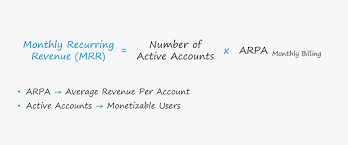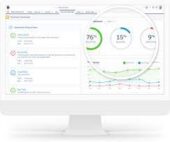Understanding and Growing Your Monthly Recurring Revenue
Understanding and Growing Your Monthly Recurring Revenue (MRR) Monthly Recurring Revenue (MRR) is a vital metric for subscription-based and managed services businesses. It indicates whether your business is growing or shrinking and is crucial for making strategic decisions. Understanding and Growing Your Monthly Recurring Revenue is a key to building, monitoring, and exploding your pipeline. What is Monthly Recurring Revenue (MRR)? While revenue represents your company’s total income, MRR is the predicted monthly revenue from active subscriptions. It includes all recurring charges such as subscriptions, service retainers, promos, discounts, and add-ons, but excludes one-time fees. Why is MRR Important? MRR provides insights into financial performance, growth potential, churn, and customer value. It is essential for strategic planning and investor relations. Benefits of Calculating MRR: Types of MRR: How to Calculate MRR: The basic formula for MRR is: MRR=Number of active accounts×Average monthly revenue per accounttext{MRR} = text{Number of active accounts} times text{Average monthly revenue per account}MRR=Number of active accounts×Average monthly revenue per account Steps to Calculate MRR: Example Calculation: MRR=(100×$50)+(50×$100)=$5,000+$5,000=$10,000text{MRR} = (100 times $50) + (50 times $100) = $5,000 + $5,000 = $10,000MRR=(100×$50)+(50×$100)=$5,000+$5,000=$10,000 So, the MRR for that month would be $10,000. Advanced MRR Calculations: Growing Your MRR: MRR is a crucial metric for understanding your customers, finances, and growth potential. By tracking and managing MRR, you can make informed decisions and drive sustainable business growth. As the subscription-based and managed services landscape evolves, prioritizing MRR is essential for improving and innovating revenue streams. Like Related Posts Salesforce OEM AppExchange Expanding its reach beyond CRM, Salesforce.com has launched a new service called AppExchange OEM Edition, aimed at non-CRM service providers. Read more The Salesforce Story In Marc Benioff’s own words How did salesforce.com grow from a start up in a rented apartment into the world’s Read more Salesforce Jigsaw Salesforce.com, a prominent figure in cloud computing, has finalized a deal to acquire Jigsaw, a wiki-style business contact database, for Read more Service Cloud with AI-Driven Intelligence Salesforce Enhances Service Cloud with AI-Driven Intelligence Engine Data science and analytics are rapidly becoming standard features in enterprise applications, Read more







